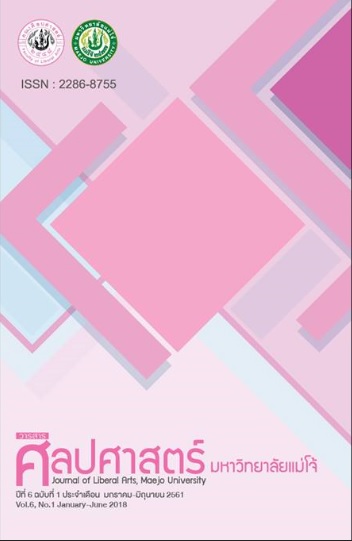A Critical Discourse Analysis of the Representation of Chinese Tourists in Thailand’s English-language Newspaper
Main Article Content
บทคัดย่อ
This paper focuses on how multimodal texts in Thailand’s English-language newspapers constructed the representation of Chinese tourists similar to the existing discourses of binary opposition between the “good” and “bad” Chinese in Thai literature. Examining visual and verbal constructions leads to understanding what
positive and negative implications of the term “Chinese tourists” are, and how social contexts influence the construction and implications of their representation. This study is a qualitative research applying Critical Discourse Analysis (CDA) as the main theoretical framework in which multimodal texts were analyzed by using social semiotics and linguistic toolkits. The result of the study revealed that positive and negative representations of Chinese tourists were verbally and visually constructed with specific features to distinguish “the good” from “the bad.” Chinese tourists as the bad Chinese in the modern context were represented as “problematic Others” who were threats to the Thai nation. On the other hand, “the good Chinese” were represented as valuable customers and national benefit protectors. Compared with the good Chinese of King Vajiravudh, the good ones in consumerist globalization are a group of people who do not need to assimilate into Thai culture, but have the ability to consume and generate national revenues. This reflects the recession of nationalism, which draws the line between “us” and “the Other”, and the rise of consumerist globalization where people can assert their identities into a society or other societies through their power as consumers.

